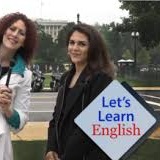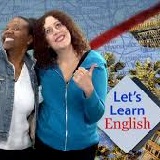|
|
| |
|
|
| |
|
|
|
|
| |
 Lesson
3 - Formal Introductions Lesson
3 - Formal Introductions
Dialogs for everyday use. Short situational dialogs for
students of English as a Foreign (EFL) or Second (ESL)
Language. |
|
|
|
Formal Introductions
Margaret: Mr. Wilson, I’d like you to meet Dr. Edward Smith.
Mr. Wilson: How do you do, Dr. Smith.
Dr. Smith: How do you do.
Margaret: Dr. Smith is an economist.
He’s just finished writing a
book on international trade.
Mr. Wilson: Oh? That’s my field, too. I work for
the United Nations.
Dr. Smith: In the Development Program,
by any chance?
Mr.
Wilson: Yes. How did you guess?
Dr. Smith: I’ve read your articles on technical
assistance. They’re excellent. |
|
|
Conversation Notes |
- Mr. Wilson
- There is a rising intonation on the words Mr. Wilson. A
falling intonation on a name used in direct address is unusual in American
English and tends to sound brusque and impolite.
- It is important to include the d in I’d in this
expression in order to differentiate it from I like, which has a different
meaning. (I’d like = I would like = I want.)
- How do you do
- Has the form of a question (and is sometimes followed by
a question mark), but it is not a question in meaning. It is simply a polite
formula used in formal introductions.
- How do you do
- The reply to How do you do is simply the same phrase
uttered with the same intonation by the other speaker. In fact, lines 2 and
3 are not strictly statement and reply but rather statements uttered by the
two speakers independently and, possibly, simultaneously.
- He’s just finished writing
- A useful pattern indicating an action recently
completed. (Just is frequently used with the present perfect tense.)
- Development Program
- Since these two words constitute a compound noun, the
principal stress falls on the first word.
- by any chance
- The meaning is possibly. Used in questions to confirm
something you think might be true actually is.
- I’ve read
- It is important to include the /v/ in I’ve in this
expression in order to differentiate it from I read, which has a different
meaning.
|
|
Source: U.S. State Department |
|
|
Additional
Conversation Lessons |
 Conversation Conversation
This is a collection of 36 situational conversations
which focus on spoken American English in a relatively
natural way....these
lessons are for intermediate students. |
 Conversation Conversation
This is a collection of 30 situational conversations. Each conversation is
accompanied by language notes....these
lessons are for advanced students. |
 Conversation Conversation
English conversation lessons. 52
lessons covering pronunciation, speaking,
writing, and grammar topics....these
lessons are for beginning students. |
 Conversation Conversation
English conversation lessons. 30
lessons focusing mostly on communication and
grammar topics....these
lessons are for intermediate students. |
|
|
|
|
|
|
|
|
Conversation Information |
Are You How You Talk?
(Beginner - Listening,
reading)
A video lesson to
help with your understanding of American dialects.
The English is
spoken at 75% of normal speed.
Click here to visit the lesson page. |
Are You How You Talk?
(Beginner - Listening)
An audio lesson to
help with your understanding of American dialects. The English is
spoken at 75% of normal speed.
Click here to visit the lesson page with the written script for this
audio program. |
Improve Your Pronunciation by Training Your
Ears
(Beginner - Listening)
An audio lesson to
help with your
pronunciation and English language
reductions. The English is
spoken at 75% of normal speed. Great English pronunciation tips.
Click here to visit the lesson page with the written script for this
audio program. |
|
|
|
|
More Conversation Information |
Disagreements in Everyday Conversation - Part 1
(Beginner - Listening)
An audio lesson to
help with your understanding of American
conversation. The English is
spoken at 75% of normal speed.
Click here to visit the lesson page with the written script for this
audio program. |
Disagreements in Everyday Conversation - Part 2
(Beginner - Listening)
An audio lesson to
help with your understanding of American
conversation. The English is
spoken at 75% of normal speed.
Click here to visit the lesson page with the written script for this
audio program. |
Giving and Receiving Compliments
(Beginner - Listening)
An audio lesson to
help with your understanding of American
conversation. The English is
spoken at 75% of normal speed.
Click here to visit the lesson page with the written script for this
audio program. |
How to Make a Complaint in English
(Beginner - Listening)
An audio lesson to
help with your understanding of American
conversation. The English is
spoken at 75% of normal speed.
Click here to visit the lesson page with the written script for this
audio program. |
|
|
|
|
Search Fun Easy English |
|
|
|
|
|
|
|
|
|
|
|
|
|
|
|
About
Contact
Copyright
Resources
Site Map |